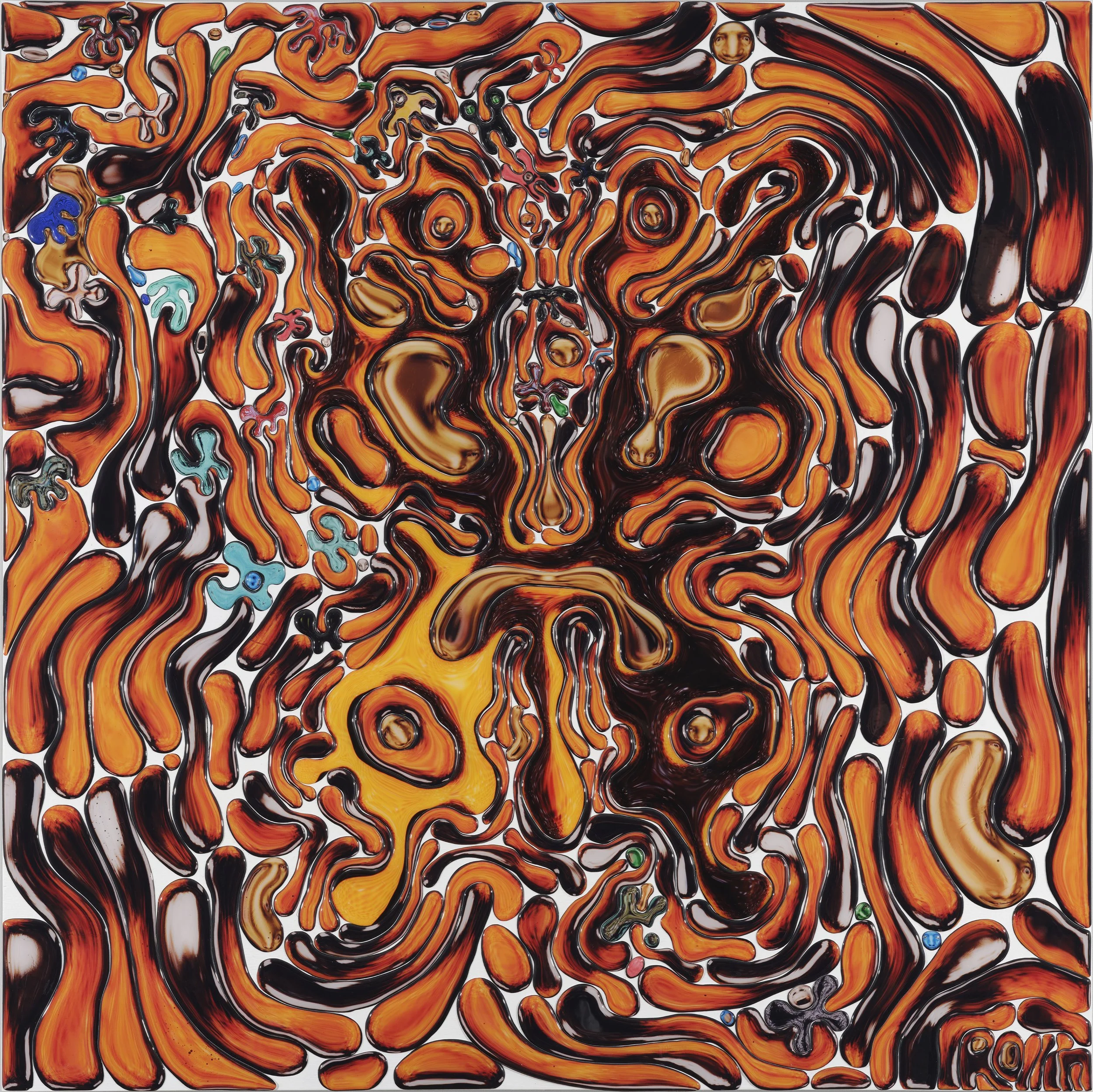Danaus plexippus with Gold Rollin
2025
24 by 24 inches
Resin, photograph, board
VERNAL POND at the CMCA
“There is something oddly tender about [Leonard’s] monstrous creatures. I believe this is partly a result of his unusual and intensive process. Although Leonard’s work often mimics digital effects, it is mostly made through analogue means such as painting real colors on faces and shooting through actual water drops. His work is, as artist and writer Claudia Hart once said, “a simulation of a simulation.” Surprisingly, at the other end of the simulation, instead of finding more of the machine, you find the human.”
Mess of scrambling roses
Resin, chromogenic print on board
2025
40 by 45 inches
Rainbow Demon (Frowning)
2025
59 by 59 inches
Resin, photograph, board
“Contrary to what the brain and eyes might conspire to think, these images were made with virtually no digital manipulation in the traditional sense of the practice—no pixilating filters, no liquefy tool, and no Photoshopped distortion is responsible for creating the impression of a third dimension.”
Gleam of diamonds eaten in the dark
2023-2024
33” ø
Urethane resin, Silver Halide photograph, painted board
NEW PORTRAITURE at XPO Gallery Paris
ABOUT FACE, Hunter Shaw Fine Arts
Rollin Leonard is an artist who works with water. To construct his portraits and sculptures, Leonard creates “water lenses” by manipulating water on glass to physically refract and distort photographic images of human faces, bodies, trees, microbes, diamonds, fur, stars, and other materials. He often uses himself as the subject in his work. Lindsay Preston Zappas for KCRW Art Insider wrote: “Though self-portraiture is one of art history’s oldest genres, Leonard’s innovative techniques elevate the medium to new process-driven heights.”
What emerges are his original, hypnotic, and monstrous collectives and multiplicities that mirror the interconnectivity of the living world. Each of Rollin’s creatures exist within the artist’s personal ecosystem, a kind of speculative fiction made up of animal-plant-rock hybrids that might emerge from the ruins of apocalypse.
Rollin first became known as part of the “Net-Art” movement in the early 2010s. His work is sometimes called “a simulation of a simulation” because it looks hyperreal but is created through working with analog materials.
Raised in Wisconsin, Rollin lives in Los Angeles. His work has been exhibited at The Photographer’s Gallery in London, Museum of the Moving Image NYC, biforms NYC, Transfer Gallery NYC, Postmasters Gallery in NYC, Haus Der Elektronischen Künste Basel, Carnegie Museum of Art, SFMoMA, Centre Georges Pompidou in Paris, the CMCA Museum in Maine, the Whitney Museum in NYC, and elsewhere.






